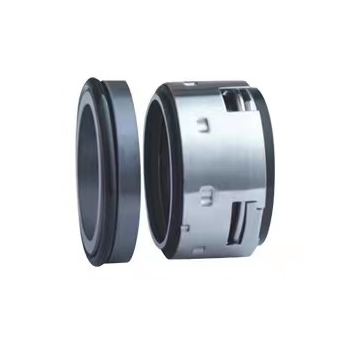views
Correctly dismantle and inspect the mechanical seal method
Precautions and repair methods during mechanical seal disassembly and inspection: When disassembling the mechanical seal, it is strictly forbidden to use hand hammers and flat shovel to avoid damage to the sealing elements. If there are mechanical seals at both ends of the pump, care must be taken during disassembly to prevent damage. For used mechanical seals, if the mechanical seal moves on the sealing surface when the gland is loosened, the dynamic and static ring parts should be replaced, and should not be re-tightened for continued use. Because after loosening, the original mechanical seal track of the running rail of the friction pair will be changed, and the sealing performance of the contact surface will be easily damaged.
If the sealing element is bonded by dirt or condensate, the condensate should be removed before disassembling the mechanical seal. Before installation, carefully check whether the number of assembled sealing parts is sufficient, whether each component is damaged, especially whether the moving and static rings have bumps, cracks, deformations and other defects. If there is a problem, it needs to be repaired or replaced. Check whether the chamfer of the shaft sleeve or gland is appropriate, and it must be trimmed if it does not meet the requirements. The components of the mechanical seal must be cleaned with acetone or mechanical shaft seal anhydrous alcohol before installation. Keep it clean, especially the moving and static rings and auxiliary sealing components should be free of impurities and dust. Coat the surface of the moving and static rings with a layer of clean engine oil. The gland should be tightened after the coupling is aligned. The bolts should be evenly tightened to prevent the gland section from deviating. Check each point with a feeler gauge or special tools, and the error should not be greater than 0.05 mm. Check the matching clearance (and concentricity) between the gland and the outer diameter of the shaft or sleeve. The circumference must be even. Use a feeler gauge to check that the tolerance of each point is not more than 0.10 mm. The compression of the spring should be carried out according to the regulations, and it is not allowed to be too large or too small. The error is required to be ±2.00 mm. If it is too large, it will increase the specific pressure of the section and accelerate the wear of the section. If it is too small, the specific pressure will be insufficient and it will not be able to play a sealing role. After the spring is installed, it must move flexibly in the spring seat.

When using a single spring, pay attention to the direction of rotation of the spring. The direction of rotation of the spring should be opposite to the direction of rotation of the shaft. After the moving ring is installed, it must keep moving flexibly. After the moving ring is pressed against the spring, it should be able to automatically spring back. Put the static ring sealing ring on the back of the static ring first, and then install it into the sealing end cover. Pay attention to protect the section of the static ring, ensure that the section of the static ring is perpendicular to the center line of the end cover, and align the anti-rotation groove on the back of the static ring with the anti-rotation pin, but do not make them touch each other. During the installation process, it is never allowed to directly knock the sealing element with tools. When knocking is required, special tools must be used to strike to prevent damage to the sealing element. All sealing rings should be coated with soapy water and other lubricants during assembly, so as to avoid the assembly process. Damage to the rubber ring. Grease is applied between the sealing surfaces of the dynamic and static rings to prevent the sealing surfaces of the dynamic and static rings from wearing before the pump starts. When assembling the floating ring, be careful not to knock down the floating ring spring, so as not to affect the floating performance of the floating ring after the spring is knocked down. After the floating ring is assembled, you can gently press the floating ring to determine whether there is good floating performance. When installing the seal, handle it with care to prevent damage to the seal, and clean the seal and cavity during installation. When tightening the mechanical seal gland, the tightening bolts should be evenly stressed to prevent uneven force from damaging the mechanical seal.
Akman Seals specializes in the production and sales of mechanical seals. The products produced include cartridge mechanical seals. The quality is guaranteed and it is worth choosing. If you are interested in mechanical seals, you can follow our website.











